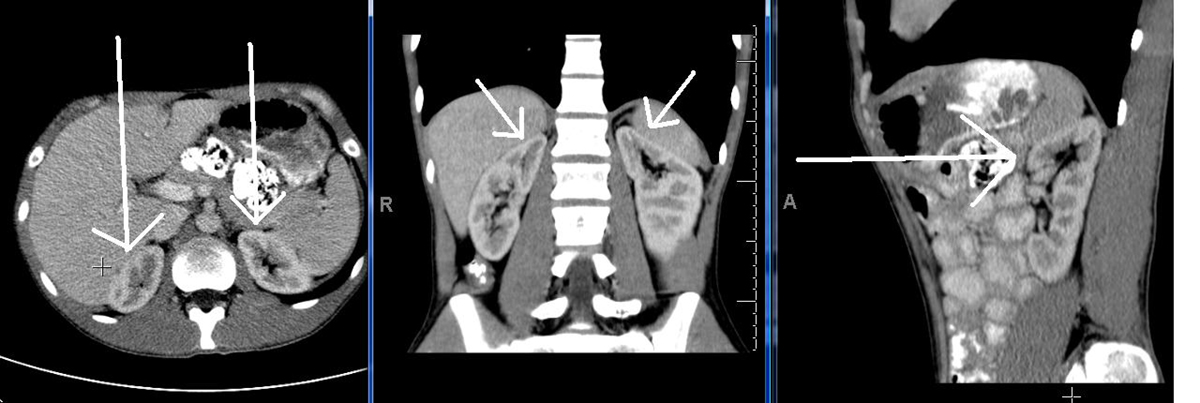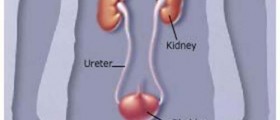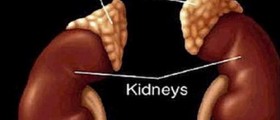Problems regarding the functioning of adrenal gland are closely associated with anxiety. These glands are placed near the kidneys in our body and they are responsible for hormones that we need when we are in a dangerous situation. Also, adrenal glands produce sex hormones and if some kind of dysfunction of this gland appears, it can be the beginning of the adrenal gland disorder. Anxiety is the usual sign of adrenal gland disorder.

Which Adrenal Gland Disorders are Connected with Anxiety?
Pheochromocytoma is the condition characterized by overproduction of adrenal gland hormones. The common symptoms are increased blood pressure, anxiety, heart palpitations, tension, sickness, sweating, etc.
Addison's disease is characterized by the lack of cortisol, a hormone produced by the adrenal gland. This disease causes low blood pressure, unlike the disease mentioned above. Addison’s disease can also cause feeling of anxiousness and some other symptoms such as watery bowel movements, mood swings, pain in the joints and muscles, etc. Although this condition is very rare, it is the first one that doctors suspect on when the anxiety is connected with adrenal gland disorders.
Cushing's syndrome is a disorder where adrenal glands secrete more corticosteroids than needed. This disorder can be the result of tumor on pituitary gland. This disease attacks women more frequently than men. The usual symptoms are weight gain, especially on the face and back, skin that is becoming thicker, excessive hairiness on the face, losing hair from the top of the head, etc. This condition can cause some psychological issues, such as depression and anxiety.
- Stressors may be physical, such as tissue damage or extreme changes in temperature, but may also be psychological. As to the latter, reported results have consistently shown that the HPA axis and sympathetic nervous system are activated by novelty or cues that signal the delivery of punishment or the withholding of an expected reward (frustration), thus generating anticipatory anxiety. The neural circuits that mediate the neuroendocrine responses to psychological stressors include the cortical activation of the basolateral nucleus of the amygdala, which in turn activates its central nucleus.
- The message is then conveyed to hypothalamic neurons by different pathways: a direct one, an indirect one, through the bed nucleus of the stria terminalis, and still another one, through brainstem serotonin (5-HT) and catecholamine-containing neurons. Neurons of the hypothalamic paraventricular nucleus secrete the corticotropic releasing hormone (CRH) into the portal circulation of the pituitary gland.
- Anxiety, fear and panic are emotions related to threat. The distinction between anxiety and fear has not always been clear, but the ethoexperimental approach developed by Robert and Caroline Blanchard has provided a sound criterion based on the systematic study of animal defensive strategies against predators. From this perspective, anxiety is the emotion related to risk-assessment behavior that is evoked in situations when the danger is uncertain (potential threat); either because the context is novel or because the danger stimulus (e.g., a predator) had been present in the past, but is no longer in the environment.
- Emotions, either normal or abnormal, are manifested in both psychological (cognitive, affective, behavioral) and physiological (neurovegetative, neuroendocrine) domains. The question that is central to the present article is whether anxiety/GAD and panic/panic disorder differ qualitatively or only quantitatively as to the activation of the HPA axis.
- The main psychological procedures for inducing experimental anxiety in human beings for pharmacological studies have been the aversive conditioning of the skin conductance response and the simulated public speaking (SPS) tests. While the drug profile of the former is similar to that of GAD, SPS has a pharmacological profile that resembles panic and social anxiety disorder, and is believed to mobilize the same neural network that is involved in these disorders.
Pituitary Adenoma
Pituitary gland is located in the brain and it is the most important gland in the body because it controls all other glands. This gland is responsible for our normal growth. If a pituitary adenoma develops, the consequences can be various. First of all, the growth can be disabled, then there is a chance for person with this disorder to experience extreme headaches. The usual symptoms include problems with blood pressure (hypertension or hypotension), sterility and tiredness without any visible reason.
Acute adrenal failure connected with Addison’s disease can strike a person out of the blue and it causes a lot of troubles with the production of adrenal hormones. It can cause an increased level of potassium in the blood, abdominal pain, backpain or pain in the legs and the loss of consciousness. The common signs of this disorder are also hypotension, watery bowel movements, and throwing up.
Treatment for these disorders
The treatment depends on the exact causes of the symptoms. Basically, if there is a lack of hormones, patients go through hormone replacement therapy. If the situation is different and the gland produces more hormones than necessary, than the situation is more difficult to handle. As you can see, anxiety is present in almost every adrenal gland disorder.

















Your thoughts on this
Loading...